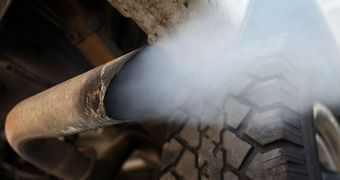In case anyone was wondering why on Earth it would cost China some $290 billion (nearly €212 billion) to solve its ongoing pollution crisis, here is your answer: because air concentrations of fine particulate matter in some of the country's regions have pretty much gone through the roof.
Thus, Green Car Congress tells us that, this past Thursday, air concentrations of PM2.5, i.e. particles measuring 2.5 micrometers or less in diameter, hit a whopping 390 micrograms per cubic meter in Shanghai.
The concentrations of PM2.5 recorded yesterday in said urban area are over five times greater than China's national limit for this air pollutant, and some 15.6 greater than what the World Health Organization (WHO) considers to be safe.
Apart from this increase in air concentrations of PM2.5, Shanghai experienced a boom in the amount of PM10, i.e. particles measuring 10 micrometers or less in diameter, hovering over the city.
More precisely, it appears that, around 4 p.m. local time, concentrations of PM10 hit about 500 micrograms per cubic meter. This level is 3 and 10 times higher than the nation's and WHO's safe limit, respectively.
Vehicles and factories are the chief culprits behind Shanghai’s air pollution crisis. Dust from construction sites, power stations, straw burning and nearby provinces are also to blame.

 14 DAY TRIAL //
14 DAY TRIAL //